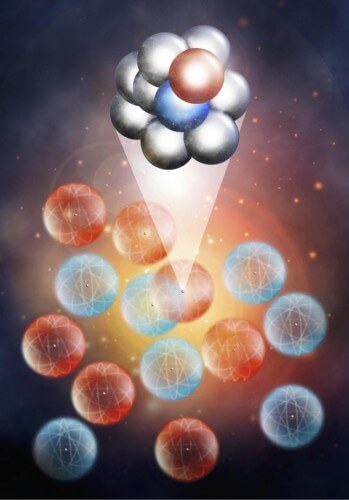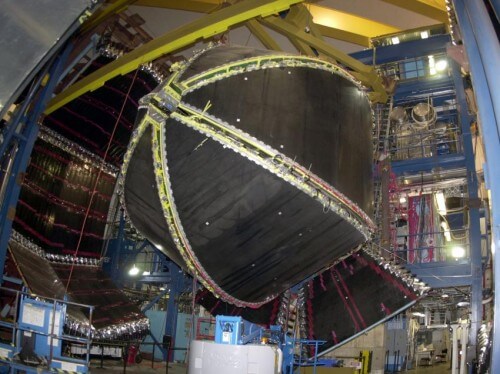The results of the experiment, with the participation of 140 researchers from all over the world led by researchers from Tel Aviv University at the Jefferson Particle Accelerator in the USA, have far-reaching effects on the understanding of heavy atomic nuclei * The new research was published in the journal Science

A new experiment conducted at the Thomas Jefferson Particle Accelerator in the United States showed that protons and neutrons move faster when they stick together as a pair than apart. The experiment is the result of a collaboration between 140 scientists from around the world led by nuclear physics researchers from Tel Aviv University. The results of the experiment were published in the prestigious journal Science.
The atomic nucleus consists of protons and neutrons, together called nucleons. Studying the interactions between the protons and neutrons in the nucleus has far-reaching implications for understanding processes such as the formation of neutron stars and the galaxies in the universe, the production of radioactive isotopes and nuclear magnetic resonance imaging systems.
"Protons and neutrons that join together in pairs move at a higher speed than protons and neutrons that move alone," explains Or Chen, a doctoral student at the School of Physics and Astronomy at Tel Aviv University and the main author of the article. "We proved that this is a universal phenomenon, which exists in all atomic nuclei, including those of heavy atoms in which there are more neutrons than protons."
To test their hypothesis, the researchers bombarded atomic nuclei with an electron beam with an energy of 5 billion electron volts. Special detectors discovered the protons and neutrons emitted from the disintegrated nucleus, and showed that at any given moment about 20% of the nucleons in the nucleus approach each other and form a pair with a mutual attraction that increases the speed of both.
An even more surprising result was the preference of the nucleons: in all the nuclei measured, the nucleons preferred to connect with nucleons different from them (protons prefer neutrons over protons, and vice versa). "In the analogy of a dance party, the boys prefer to dance mainly with the girls," explains Prof. Eli Pisetsky, head of the nuclear physics group at Tel Aviv University and co-author of the article.

"This pairing of the different nucleons also controls the behavior of heavy nuclei such as lead," notes Dr. Doug Higginbotham, a researcher from the Jefferson Laboratory and co-author of the article. "This changes the understanding of neutron stars and other nuclear systems in our galaxy," Pisecki adds.
The fact that pairs in the nucleus are mainly proton-neutron pairs indicates that there is an equal number of protons and neutrons moving at high speed in the nucleus. In the case of heavy nuclei, in which there are more neutrons than protons, the protons actually have a higher probability of moving fast. This effect means that the protonic minority can have a higher average speed than the neutronic majority. This behavior is opposite to systems without short-range interaction between the particles.
Now the Israeli team hopes to use the new results to understand the interactions also in different systems such as quarks inside the nucleon, neutron stars and cold atomic gases. For this purpose, the nuclear group at Tel Aviv University is collaborating with Dr. Yoav Sagi from the Technion, who is currently establishing a cold atom laboratory that will allow, among other things, to simulate the large asymmetry of neutron stars in an array of cold atoms.

One response
An article from the Israeli team. http://arxiv.org/pdf/1202.3452v3.pdf
The work is important in a global KNM, and the amount of responses here is low.
Another topic: what did they manage to say about the article that contradicts Hawking's words about
I scanned the web for responses to Laura Marcini Houghton who wrote 2 articles contradicting the
Formation of black holes according to Hawking. The articles are arXiv:1406.1525 and arXiv:1409.1837. One is to conduct an approximate calculation and the other a numerical analysis of the theory. One astrophysicist has released images of objects at the center of the galaxy that appear to be pseudo-holes in terms of the material drifting around them. Actually the edited photo looks a bit convincing. But the text that came after, the claimant - an astrophysicist used our knowledge about black holes to contradict the claim that they cannot be created and this is a weak argument.
In the meantime, the network has not produced any serious responses to the articles. I guess somewhere physicists are sitting and analyzing them.